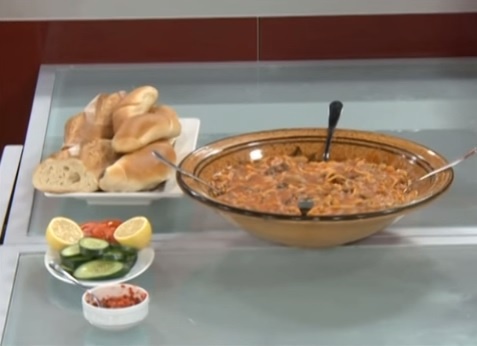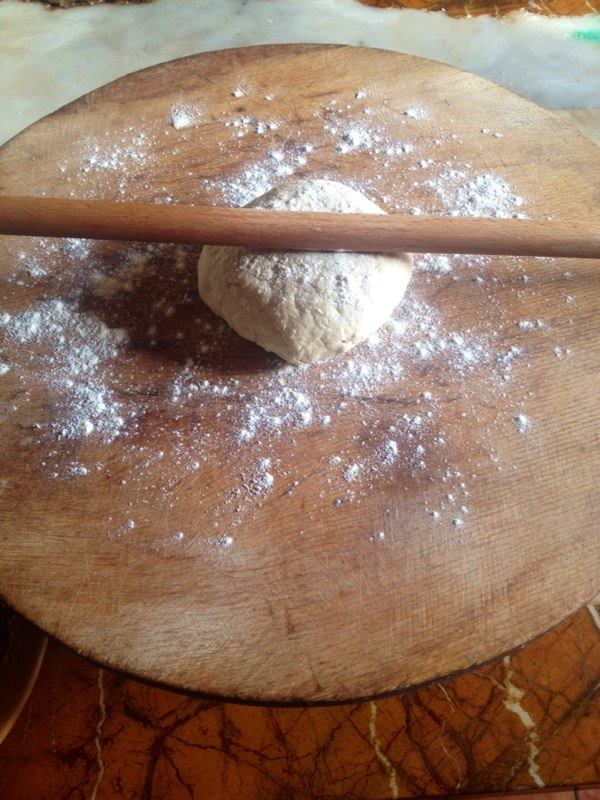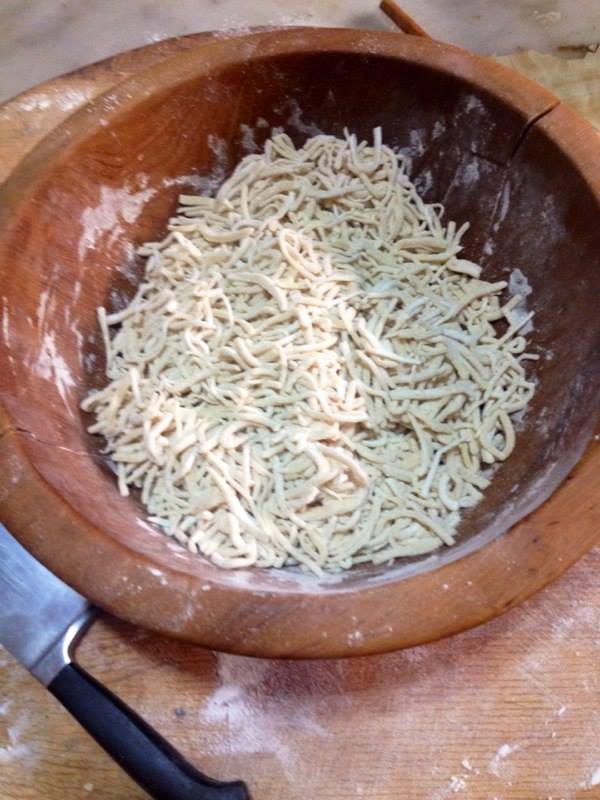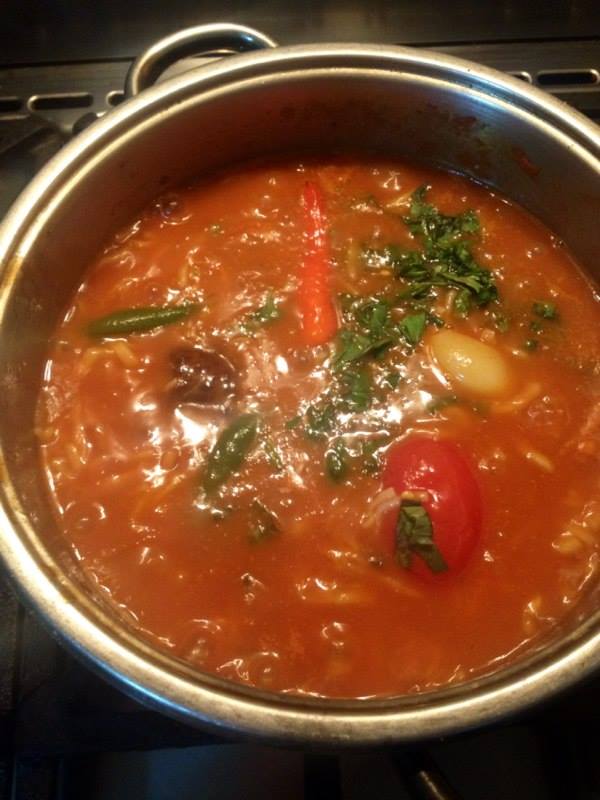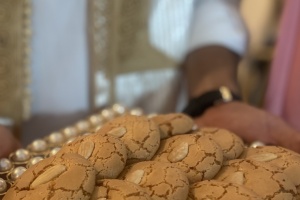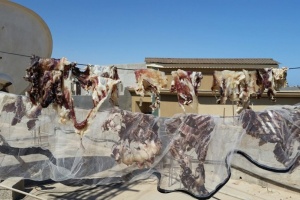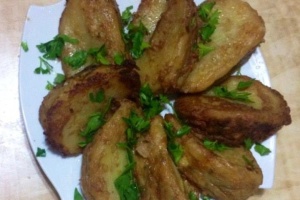Rishtat Burma, a warm main dish for cold winter days, is a high calorie dish with a large quantity of legumes. It is considered one of the most popular and main dishes for Libyans and an ideal dish for camping too. It’s a simple dish which does not need a refrigerator to keep the meat and with no much fuss of cooking utensils. It's made with dried meat, dried legumes such as Homs, lentils, beans and fenugreek, and a pinch of herbs grown in any home garden.
Although you could find the Rishta ready-made in the supermarkets nowadays, most Libyan women still stick to making it at home, like the old days.
To prepare Rishtat Burma, you need Hallat al-Rishta, a stick specially made and named after this dish and a small wooden table to work on the dough. Both are one of the benchmarks for a well-prepared kitchen in Libyan women's culture.
The meat used in Rishtat Burma is salted and dried in the sun yearly, usually in Ead Al-Adha, and then stored in containers for use when needed. It is cooked in a red sauce usually hot in spices, along with the legumes and a pinch of dried homemade tomatoes.
While leaving the sauce to simmer, Rishta is prepared by making dough out of plain flour and water. Good kneading is an essential part of making fine Rishta dough.
I remember my mother-in-law and women of her generation, pride themselves on who could make the Rishta's dough stiffer, the harder it is, the better Rishta you will end up with.
Stretch the dough and roll it with the Halla stick into a fairly thin sheet. The pastry is then formed into a neat round shape at the size of the Rishta's wooden table. Shake a little flour on the surface of the dough and then fold it into quarters or roll it around the pin, cut into long strips approximately 2 to 3 cm wide.
Then comes the tricky part; cutting it into thin, neat strips. I had the pleasure watching my mother doing this as quickly as a heartbeat. Practice and patience is needed to achieve this distinction.
Pour the Rishta pasta into the sauce after adding the right quantity of water and cook for another 10 to 15 minutes until tender, season with basil leaves, dill, a clove of garlic and green pepper.
Presentation of this dish is important, it's best served in a traditional wooden bowl called Qasah. A lemon juice, Haresa and crumbly whole-grain bread called Chisha will make the day.
The smell of the Rishta sauce makes its way through the neighbour's house, so make sure you make extra and have enough to go round. It’s a tradition in the Arab world that if your neighbors smell your nice food you should send them a taster!

